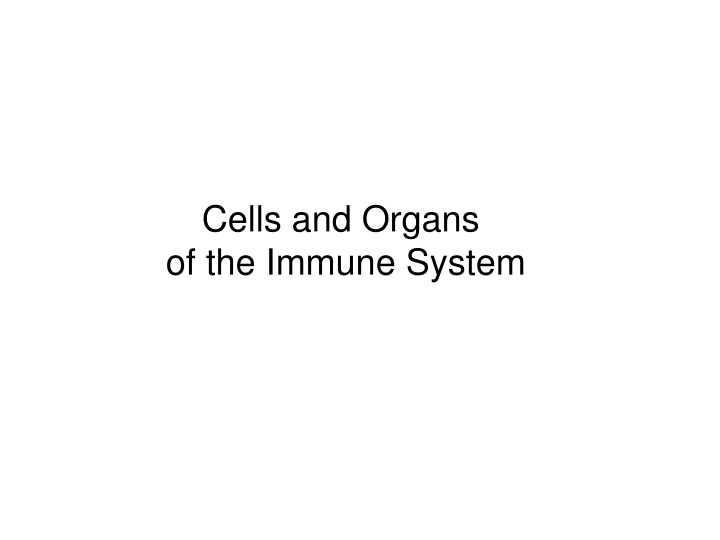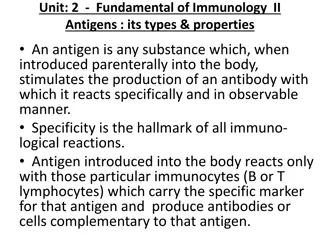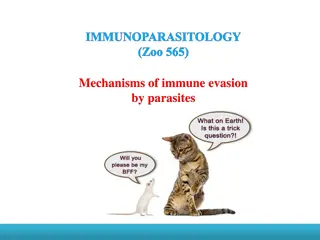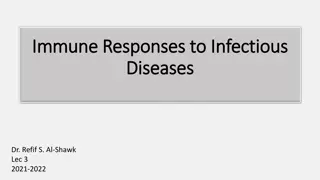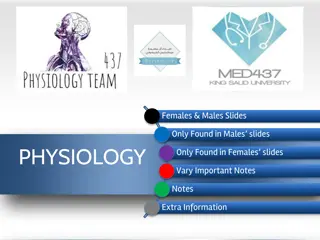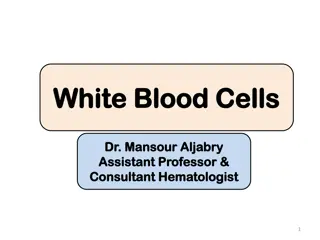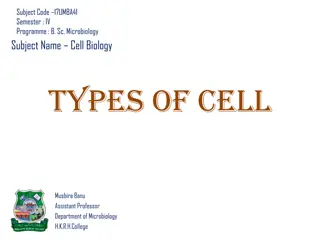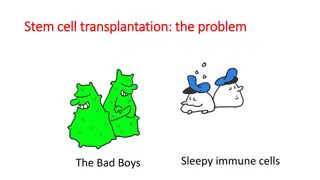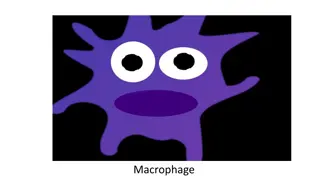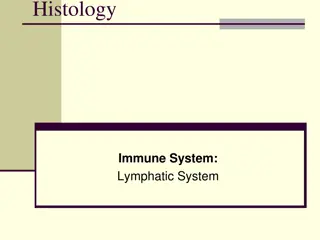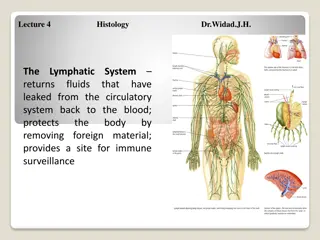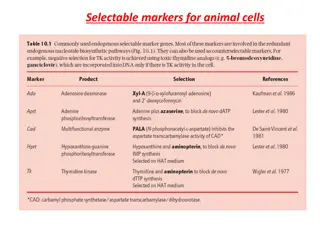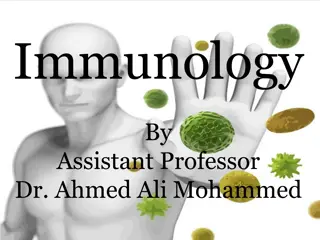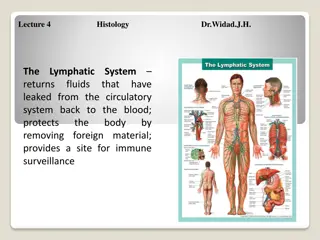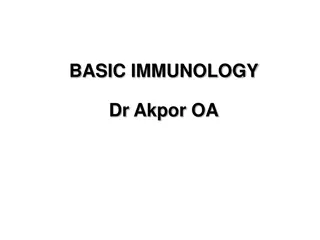Role of Immune Cells in Defense Systems
Cells and organs of the immune system play crucial roles in protecting the body against pathogens and maintaining homeostasis. Derived from stem cells, immune cells like neutrophils, mast cells, basophils, eosinophils, monocytes, T cells, and B cells are key players in innate and adaptive immunity. Primary lymphoid organs, such as the thymus and bone marrow, are essential for immune cell development and maturation. Lymphatic vessels serve as a secondary circulatory system, facilitating the movement of antigens to lymph nodes for immune responses. Understanding the functions and interactions of these immune components is vital for combating infections and diseases.
Download Presentation

Please find below an Image/Link to download the presentation.
The content on the website is provided AS IS for your information and personal use only. It may not be sold, licensed, or shared on other websites without obtaining consent from the author.If you encounter any issues during the download, it is possible that the publisher has removed the file from their server.
You are allowed to download the files provided on this website for personal or commercial use, subject to the condition that they are used lawfully. All files are the property of their respective owners.
The content on the website is provided AS IS for your information and personal use only. It may not be sold, licensed, or shared on other websites without obtaining consent from the author.
E N D
Presentation Transcript
Cells and Organs of the Immune System
All cells in the immune system are derived from stem cells and either myeloid or lymphoid precursors under the control of cytokines
Neutrophils, mast cells basophils and eosinophils are important granulocytic cells involved in phagocytosis or release of innate immune inflammatory mediators
Neutrophils, normally found in circulation, migrate out of blood vessels to sites of infection in effort to phagocytose invading bacteria
Mast cells release histamine, cytokines and other inflammatory mediators when IgE bound to the surface of the cell is crosslinked by an allergen
Monocytes are quiescent precursors to macrophages and are found in all tissues in the body. On activation by invading pathogens, cytokines etc., monocytes differentiate into macrophages (an angry monocyte) that can phagocytose pathogens and present antigen to T cells to engage the adaptive immune response
T and B cells are the main cell types of the adaptive immune system. B cells express membrane bound antibody (IgM) on their surface to recognize intact (unprocessed) antigen. T cells express a T cell receptor that recognizes processed antigen bound to the MHC molecules
Primary lymphoid organs: Thymus: encapsulated organ where T cells mature and are selected based in part on their ability to not recognize the host Bone Marrow: site of remaining hematopoiesis, B cells mature here, mostly in skull, ribs, sternum and pelvis
Lymphatic vessels: Drain the entire body to regional lymph nodes is a secondary circulatory system moving antigen to lymph nodes where B and T cells can respond
Lymph nodes: Encapsulated organ found throughout the body. Ag from the periphery is moved here through lymphatics by antigen presenting cells. Lymphoid follicles (collection of T and B cells) in the node on encountering their specific Ag will proliferate generating a germinal center that leads to the formation of fully mature, effector T and B cells
Spleen: Encapsulated organ found under the liver. Highly vascular organ that filters blood. Is responsible for eliminating blood-borne pathogens. RBCs carrying immune complexes are processed here to remove Ag. Also has follicles that on encountering their specific Ag will proliferate generating a germinal center that leads to the formation of fully mature, effector T and B cells
Peyers Patches: Lymphoid tissue in the small intestine composed of T and B cells and Ag- presenting cells not encapsulated. Part of the Mucosal Associated Lymphoid Tissue: MALT Pathogens move through M cells where they encounter collections of lymphocytes that can generate a germinal center on encountering their specific Ag. Responses here usually generate IgA producing B cells.
